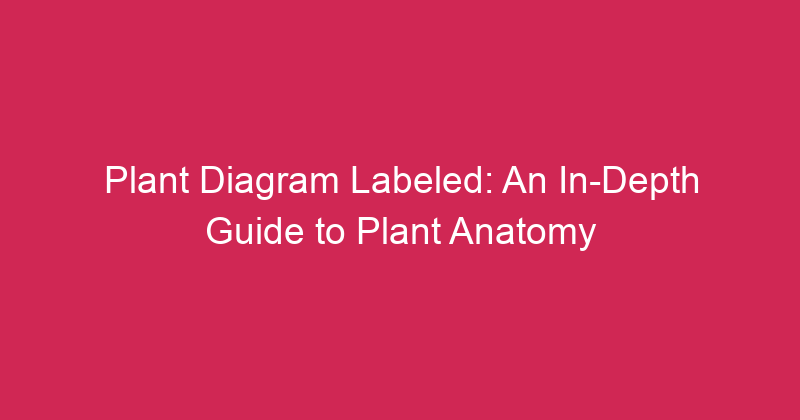Plants are fascinating organisms that play a vital role in our planet’s ecosystem. Understanding their anatomy is crucial for appreciating their complexity and the remarkable processes they perform. A plant diagram labeled is a valuable tool that can help us identify and understand the different structures of a plant.
From the roots that anchor the plant to the leaves that capture sunlight for photosynthesis, every part of a plant serves a specific function. A plant diagram labeled provides a visual representation of these structures, making it easier to comprehend their organization and interconnections.
Whether you’re a student, a gardener, or simply curious about the natural world, a plant diagram labeled can enhance your knowledge and appreciation for these captivating organisms.
Root System
Primary Root:
- The initial root from which all other roots develop.
- Usually penetrates deep into the soil to anchor the plant and reach water sources.
Secondary Roots:
- Branch out from the primary root and spread laterally.
- Absorb water and nutrients from the soil and transport them to the rest of the plant.
Root Hairs:
- Tiny projections from the surface of secondary roots that greatly increase the surface area for absorption.
- Help the plant efficiently absorb water and minerals from the soil.
Stem System
Main Stem:
- The central axis of the plant that supports the leaves, flowers, and other structures.
- Conducts water and nutrients from the roots to the rest of the plant.
Lateral Stems (Branches):
- Grow from the main stem and form a branching pattern.
- Support leaves, flowers, and other reproductive structures.
Nodes:
- Points where leaves or branches are attached to the stem.
- Contain specialized tissues that facilitate the exchange of water, nutrients, and signals between different parts of the plant.
Leaf System
Leaf Blade:
- The broad, flattened part of the leaf that contains chlorophyll.
- Carries out photosynthesis and absorbs sunlight, carbon dioxide, and water to produce glucose.
Leaf Stalk (Petiole):
- The stalk that connects the leaf blade to the stem.
- Supports the leaf and facilitates the movement of water, nutrients, and photosynthetic products.
Veins:
- A network of vascular tissue within the leaf that transports water, nutrients, and photosynthetic products.
- Also provide structural support to the leaf.
Reproductive Structures
Flowers:
- Specialized structures that produce seeds.
- Consist of various parts, including petals, sepals, stamens, and pistils.
Stamens:
- The male reproductive organs of a flower.
- Produce pollen grains that contain the male gametes.
Pistils (Carpels):
- The female reproductive organs of a flower.
- Contain the ovary, which includes the ovules, and the style and stigma, which facilitate pollen reception and germination.
Other Important Structures
Cuticle:
- A waxy layer that coats the surface of leaves and stems.
- Protects the plant from water loss and environmental stressors.
Stomata:
- Small openings found on the surface of leaves.
- Allow gas exchange and regulate water loss through transpiration.
Chloroplasts:
- Organelles found in plant cells that contain chlorophyll.
- Responsible for photosynthesis, the process by which plants convert sunlight into energy.
Conclusion
A plant diagram labeled is a valuable tool for understanding the intricate anatomy of plants. Each component plays a specific role in the plant’s survival and growth. From the roots that anchor the plant to the leaves that capture sunlight, the various structures work together to ensure the plant’s health and productivity.
By referencing plant diagrams labeled, we can gain a deeper appreciation for the complexity of plants and the remarkable processes that they perform. Whether you’re a student, a gardener, or simply curious about the natural world, a plant diagram labeled can enhance your knowledge and understanding of these fascinating organisms.
Also Read: Lipids Are Water Soluble: True or False?















Leave a Comment